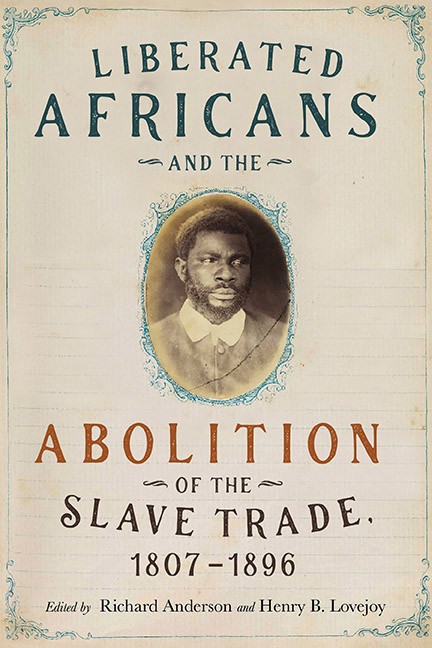Book contents
- Frontmatter
- Dedication
- Contents
- List of Illustrations
- Acknowledgments
- Introduction: “Liberated Africans” and Early International Courts of Humanitarian Effort
- Part One Origins of Liberated Africans
- Part Two Sierra Leone
- Part Three Caribbean
- Part Four Lusophone Atlantic
- Part Five Liberated Africans in Global Perspective
- Part Six Resettlements
- Bibliography
- Notes on Contributors
- Index
5 - New Insights on Liberated Africans: The 1831 Freetown Census
Published online by Cambridge University Press: 21 March 2020
- Frontmatter
- Dedication
- Contents
- List of Illustrations
- Acknowledgments
- Introduction: “Liberated Africans” and Early International Courts of Humanitarian Effort
- Part One Origins of Liberated Africans
- Part Two Sierra Leone
- Part Three Caribbean
- Part Four Lusophone Atlantic
- Part Five Liberated Africans in Global Perspective
- Part Six Resettlements
- Bibliography
- Notes on Contributors
- Index
Summary
In 1831, the colony of Sierra Leone took a remarkable census of its capital, Freetown, including over 3,200 liberated Africans living there. The census is an exciting record that documents a slice of time. In what it tells us, in questions it raises, and in gaps it reveals, the census shows historians how important it is to contextualize the story of liberated Africans—to see them in their fullness and to put each of their moments in an evolving story. Though imperfect, the census was quite comprehensive and contains valuable social and economic information that goes beyond what those who commissioned it intended. The main British goal in conducting the census was to learn more about liberated Africans—as local and metropolitan officials were engaged in ongoing policy discussions and changes. Many in the colony and elsewhere were concerned with the loss of liberated Africans, especially through re-enslavement. By counting liberated Africans, the census helped refocus questions of their fate. But it did much more than that. The census reveals liberated Africans as builders of the city, whose work and social practices were highly gendered. While the majority of adults seems paired as couples, many other living arrangements were common, especially among newly freed people, who tended to live in remote sections. African Freetown was already stratified. Settlers—repatriated Nova Scotians and Jamaicans and their children, most living in the town center—constituted the core of a middle class defined by wealth, property, and jobs in the British-dominated establishment, and status. Economically below them was a pyramid ranging down to the most unskilled.
In 1831, a few liberated Africans were poised to join the commercial middle class, while most were artisans, marketers, and all types of laborers. About a tenth worked as servants and apprentices in the households of Europeans, settlers, liberated Africans who had arrived earlier, and others—thus boosting the labor they controlled. The census is a snapshot in a very dynamic situation. It reveals one moment and implies what went before. It also hints at the near future for liberated Africans, when women and men went into the surrounding territory as traders and the commercial middle class emerged. The census is a rich document, but to write a deeper, broader history it needs to be linked with other sources on individuals, families, and social groups.
- Type
- Chapter
- Information
- Publisher: Boydell & BrewerPrint publication year: 2020
- 1
- Cited by



